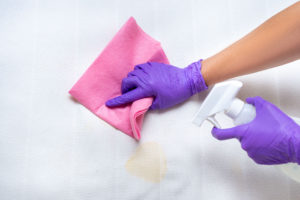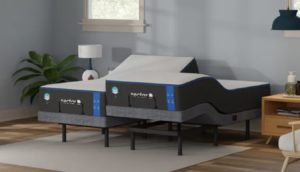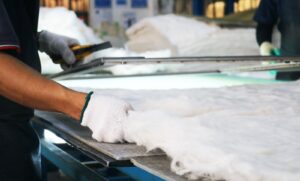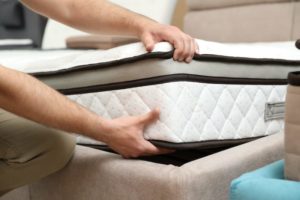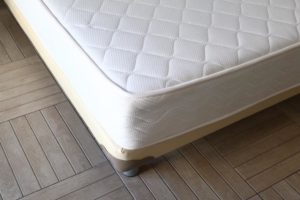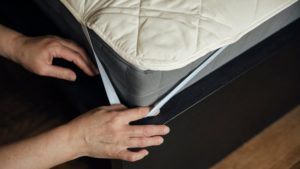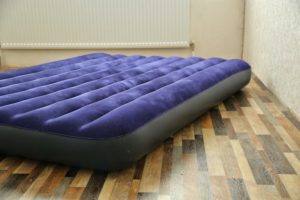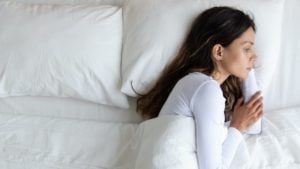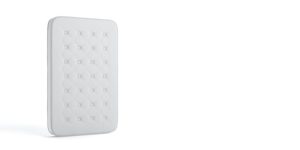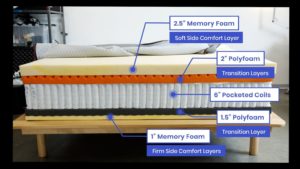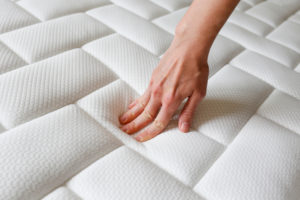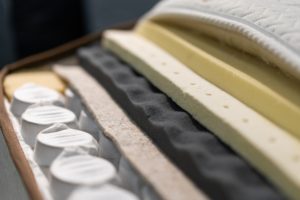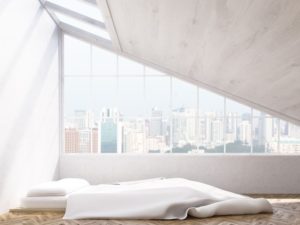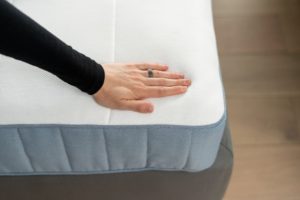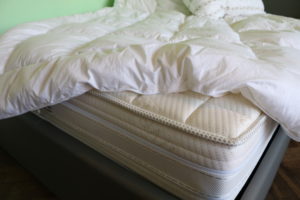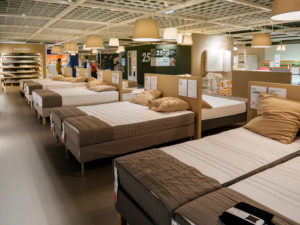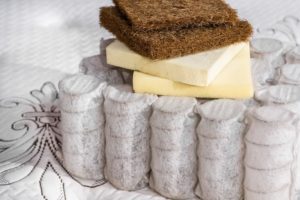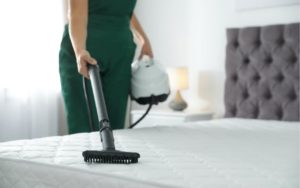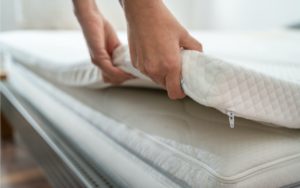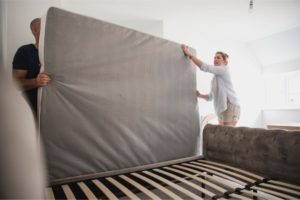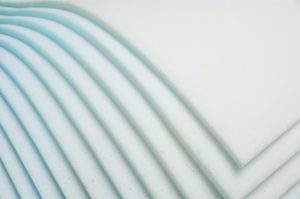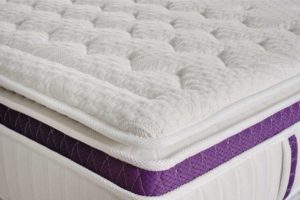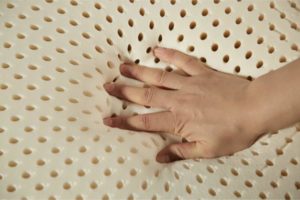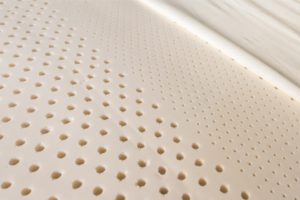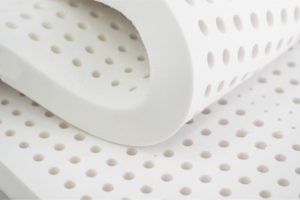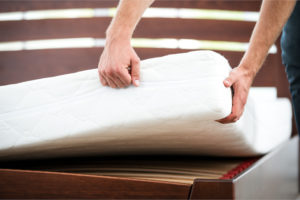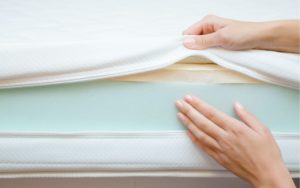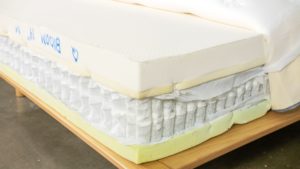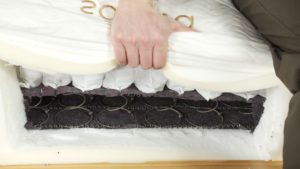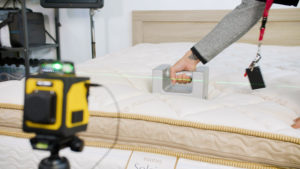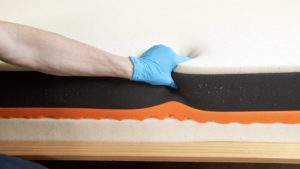How to Make a Memory Foam Mattress Sleep Cooler
Memory foam mattresses are prized for their comfort and close conforming. Unfortunately, the same properties that make them so comfortable also tend to make them sleep hot.
Memory foam is notorious for trapping body heat. Its density makes it less breathable than other materials, while its body-hugging properties make it more likely to absorb and contain the body heat of the sleeper.
The properties of memory foam can result in an uncomfortably warm sleeping experience, particularly on summer nights. But is there anything that sleepers can do to minimize the heat retention of memory foam? We’ll detail some effective methods to make a memory foam mattress sleep cooler.
Let us help you find the perfect bed
Answer a few questions to find the right mattress for your unique needs
How to Make a Memory Foam Mattress Cooler
Memory foam tends to trap body heat. While you can’t directly influence the heat retention properties of memory foam, what you can do is utilize bedding accessories to improve the overall temperature regulation of your bed. In most cases, this means using a specialized mattress topper, mattress pad, or even new sheets.
“Feeling hot at night may disrupt your sleep and cause problems with falling and staying asleep. Sending your body the right signals by keeping it cool before bedtime and during the night is important for achieving good quality sleep. When you can keep things cool, your body can better regulate its temperature at night (e.g., leading to less disruption or fewer wake-ups during the night). I generally recommend looking for breathable, natural fibers for bedding and cooling sheets, especially if you’re a hot sleeper. Regulating your core body temperature during the night can make a huge difference in your overall sleep quality, so breathable materials are optimal to promote cooler temperatures. Consider hypoallergenic materials like cotton, linen, silk, or bamboo, as synthetic fibers tend to be less breathable and trap more heat at night. This goes for bedding/sheets as well as your pajamas or sleepwear. It may also help to keep a frozen cool pack under your pillow and/or feet or invest in a cooling mattress topper.”
– Sarah Silverman, Psy.D., a licensed psychologist and holistic sleep wellness consultant who treats patients in New York and Florida.
Mattress Toppers
Mattress toppers are thin layers of material that are placed on top of a mattress to transform the feel of the bed. Most are made of memory foam, polyfoam, or latex, though toppers made of other materials like feathers, down, and wool are also available. Depending on the design and materials used, a mattress topper can help your mattress feel cooler while also improving its comfort.
Most mattress toppers are 1-4 inches thick, and relatively inexpensive compared to the cost of replacing your mattress. If cooling is your goal, it’s best to choose a topper that uses gel-infused memory foam, latex, or another breathable and cool material. There are specialized cooling mattress toppers that use a range of temperature regulation features, from breathable constructions to the use of phase-change materials or tubes of temperature-controlled water.
Mattress Pads
A mattress pad is a very thin fabric covering made to protect your mattress from damage. Due to their thin design, they generally won’t significantly change the comfort or feel of your bed – but they can help with cooling.
Good cooling mattress pads are breathable and typically made of a soft and cool fabric such as natural cotton. Some can also help wick away moisture, resulting in a cooler-feeling bed.
Cooling Sheets
One simple fix may be new sheets. Sheets act as a buffer between the sleeper and the surface of the memory foam mattress. The material and weave of the sheets can have a significant effect on how cool a mattress feels. Flannel sheets, for example, are a popular choice for winter slumber because they are thicker and warmer than breathable cotton percale sheets.
There are several different kinds of cooling sheets, which have constructions that will help you sleep cooler. These products are generally moisture-wicking, a property that helps wick away sweat to improve comfort and cooling. They will usually utilize a cool-feeling material, such as high-quality cotton or linen.
Cooling Pillows
Another accessory that may be worth replacing is your pillow. Our heads and necks are sensitive to heat, so if our heads feel too warm, it’s likely that our whole bodies will feel uncomfortably hot.
Good cooling pillows will generally be lightweight and breathable, and feature soft, cool fabric such as cotton or linen. Latex, buckwheat, down alternative, and shredded foam fills all tend to sleep cooler than solid memory foam. Some pillows are made with cooling technologies like cooling panels or gel-infused or copper-infused foams.
Controlling Your Sleep Environment
There are other ways to help improve your sleep experience by controlling various elements of your bedroom environment.
Airflow
Maintaining good airflow in your bedroom is important on warm nights. Consider keeping a window open, or investing in a small circulating fan. Airflow is important for your bed itself, as well. If your mattress sits on the floor, consider investing in a bed foundation to improve airflow. Depending on the type of mattress you have, you may also consider switching to a slatted bed frame design to further improve airflow.
Sleepwear
The sleepwear you choose to use at night will have a significant impact on your body temperature. It’s best to choose breathable, lightweight clothing made of cotton or thin wool. Alternatively, many people find it most comfortable (and most cool) to sleep in nothing but underwear.
Lights
Bedside lamps, overhead lights, and other electronics can all produce heat when they are turned on. If your room feels uncomfortably warm, turning off lights and electronics well before bedtime can help.
Air Conditioning
If your home does have air conditioning, it may be worthwhile to use it on very hot nights. While it can get expensive, it’s difficult to put a price on quality sleep. The ideal bedroom temperature is somewhere around 65 degrees.
“Regulating your core body temperature during the night can make a huge difference in your overall sleep quality, so breathable materials are optimal to promote cooler temperatures. I recommend looking for breathable, natural fibers for bedding, pillows, and cooling sheets, especially if you’re a hot sleeper. Opt for more hypoallergenic materials like cotton, linen, silk, or bamboo, as synthetic fibers tend to be less breathable and trap more heat at night. Your body temperature needs to drop a few degrees to transition to sleep, so having breathable bedding that promotes cooler temperatures is optimal and can help assist with your body’s natural temperature regulation process at night.”
– Sarah Silverman, Psy.D., a licensed psychologist and holistic sleep wellness consultant who treats patients in New York and Florida.
When It’s Time for a New Mattress
If you’ve tried everything in your power to make your memory foam mattress sleep cooler, and haven’t found much success, it may be time for a new mattress. Additionally, if your bed is 6-8+ years old, or no longer as comfortable as it once was, it’s probably time for a new mattress.
If you choose to buy a new bed, look for mattresses with good ratings for temperature neutrality. Innerspring and hybrid beds tend to perform well, as they have better airflow than all-foam designs. If you do choose another memory foam bed, look for one that’s made with cooling technology like cooling gel, and be sure to check reviews to gauge the bed’s cooling abilities.
You can also shop for mattresses that are specifically designed for better temperature regulation. For hot sleepers, purchasing a specialized mattress can make a huge difference in overall sleep quality. For more information, see our guide to the best cooling mattresses.

Still have questions? Ask our community!
Join our Sleep Care Community — a trusted hub of sleep health professionals, product specialists, and people just like you. Whether you need expert sleep advice for your insomnia or you’re searching for the perfect mattress, we’ve got you covered. Get personalized guidance from the experts who know sleep best.

